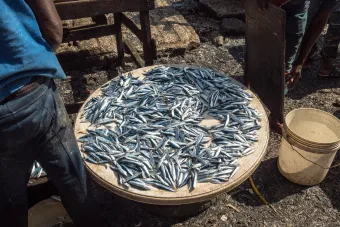
Recently published research led by the NOC is helping to inform sustainable fishing plans for the North Kenya Banks, which is viewed by the Kenyan government as the next frontier for food security of the coastal population.
This research shows a relationship between the positioning of a confluence of two ocean currents and the level of productivity on the North Kenya Banks, which sustains highly productive fisheries.
Using ocean models, this study found that this productive upwelling feature is controlled by the confluence of the Somali and Zanzibar currents. When these currents merge further south, nutrient upwelling is enhanced around the North Kenya Banks, which in turn helps enhance ocean productivity.
Lead author, NOC scientist Dr Zoe Jacobs, said “Sustainable exploitation of the North Kenya Banks is high on the Kenyan political agenda, but very little is known about what drives this highly productive upwelling and how stable it is. It’s great to see that our ocean models are helping to understand the fishery potential and how best it can be exploited given the high variability of this feature.”
Published in the Journal of Geophysical Research Oceans, this is the result of a collaboration between scientists at the NOC, Kapodistrian University of Athens, Nelson Mandela University in South Africa and the Kenya Marine and Fisheries Institute.
This research formed part of the SOLSTICE project that aims to bring together recent advances in marine technologies, local knowledge and research expertise to address challenges facing the Western Indian Ocean region.